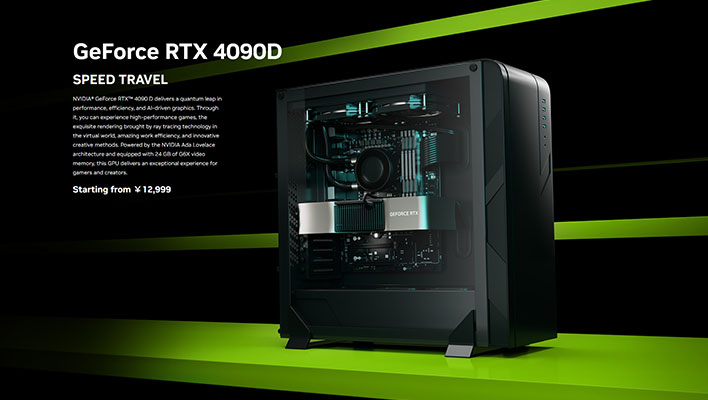NVIDIA's Cut-Down GeForce RTX 4090D For China Is Now Official, Here Are The REAL Specs
After a fair amount of hoopla and plenty of speculation, NVIDIA has formerly introduced its GeForce RTX 4090D (Dragon) for the Chinese market. In doing so, we now have clarity on the actual specifications. Contrary to a late-breaking rumor that appeared shortly before NVIDIA launched its newest GeForce RTX 40 series addition, the cut-down GPU sports more changes than just a reduction in Tensor cores.
In case you missed it, a reviewer on the Chiphell forum claimed "only the Tensor core has been castrated" on the GeForce RTX 4090D, while "the rest remains unchanged." They further stated that the card's "game performance remains unchanged" compared to the regular GeForce RTX 4090, and the same goes for the price.
They at least had the pricing correct—NVIDIA has set the MSRP at 12,999 Chinese Yuan (around $1,835 in US currency), which what the original GeForce RTX 4090 launched at in China. However, there's more at play here than just a drop in Tensor cores, which ended up reduced to 456 (versus 512 on the regular GeForce RTX 4090). NVIDIA also cut back the number of CUDA cores to 14,592 (versus 16,834, dropped the number of RT cores to 114 (versus 128), and scaled back the total graphics power (TGP) to 425W (versus 450W).
Clock speeds remain the same at 2.28GHz (base) and 2.52GHz (boost), as does the memory configuration at 24GB of GDDR6X paired with a 384-bit bus, for 1,008GB/s of memory bandwidth.
Taken as a whole, these revised specs represent a more substantial downgrade than yesterday's rumor let on, at least on paper. Overclocking is also gimped, even on cards offered by NVIDIA's hardware partners like this MSI Suprim X model leaked by X/Twitter user @harukaze5719...
NVIDIA had to make changes to the specs in order to comply with the US government's export sanctions. The original GeForce RTX 4090 was deemed too powerful (presumably due to its AI performance), while the cut-down GeForce RTX 4090D apparently passes muster.
It will be interesting to see how actual gaming performance compares. The product page on NVIDIA's China portal contains a number of graphs suggesting it will be similar, including in DLSS + RT gaming where Tensor cores flex their muscle. We'll have to wait and see once user and reviewers have a chance to put the GeForce RTX 4090D through its paces.




